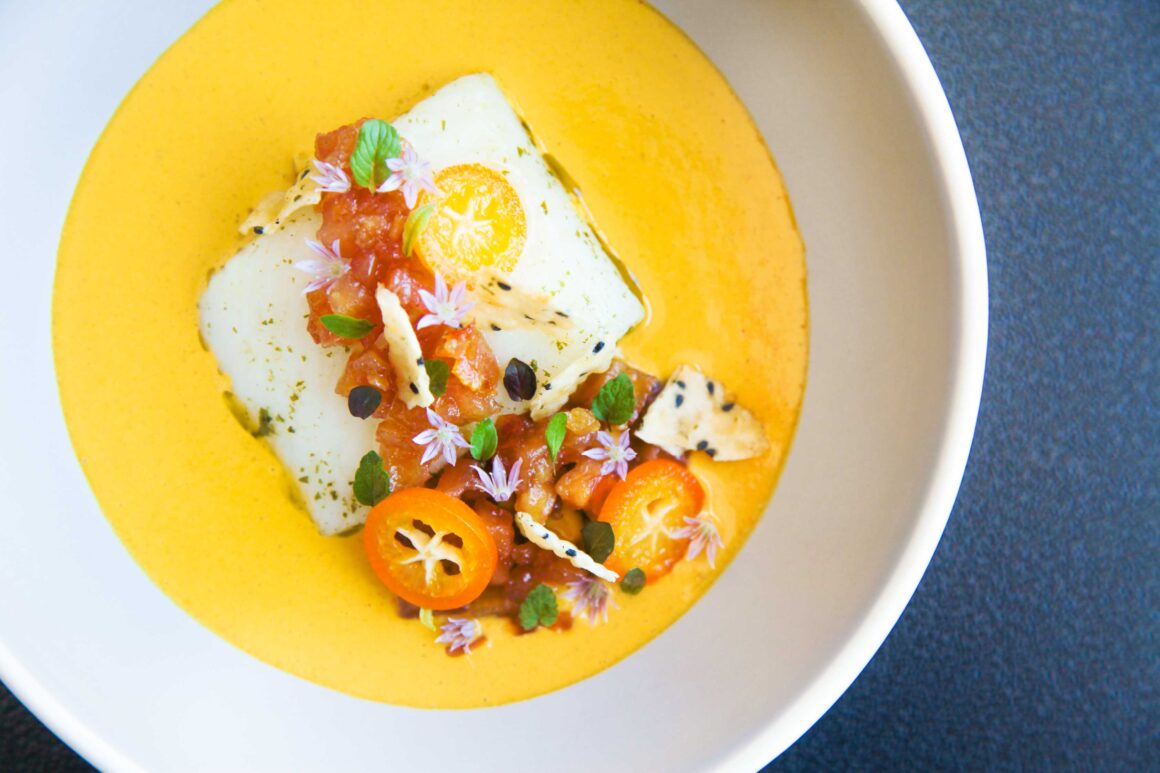

This halibut, lemon verbena, golden curry, quince and kumquat dish perfectly matches the lovely sunny days and brings you refined and refreshing new flavours. The fish is infused with lemon verbena and cooked at 50ºC sous vide (don’t worry, you can do this in a pan as well). The curry carries typical Thai flavours of lemongrass and lime and looks like liquid gold. The sweet quince chutney is perfumed with star anise, ginger and chilli and works in perfect antithesis with the sour pickled kumquat slices.
Herbs, plants and gardening
Have I told you that I have a rooftop terrace in my new Viennese flat? Well, yes I do, and shortly after the weather (finally) got nicer, my boyfriend and I started populating it with plants. We chose them based on two criteria: they had to be mostly edible and had to appeal to butterflies and bees. In case you’re curious, I’ll list a few: shiso, bok choy, coriander, heirloom carrots, peas, nasturtiums, cornflower, dill, parsley, four types of basil, six types of lettuce, six types of mint, three types of sage, a cola plant, redcurrants, strawberries, and even cucamelons. You probably guessed right: no, I haven’t listed them all.
Austrians’ love of plants
I noticed that in Vienna (and I presume that applies to the rest of Austria as well), it’s very easy to find all sorts of plants that are difficult to come across in other countries. Lemon balm is sold in most supermarkets and I visited more than three stalls that sold mint varieties I had never heard of: basil mint, chocolate mint, strawberry mint (which ism, by the way, fantastic), banana mint and even pineapple mint. There’s also all types of sage: purple, pineapple, mandarin. I’d never heard of cola plants before moving here: they’re a small shrub that smells like cola gummy bears when you rub it. I even found white strawberries, tens of varieties of tomatoes, chillies and other aromatics. I’m not sure if it’s because I only grew up in the city and never had the chance to experience the countryside life, but all these plants are fascinating to me, and so is the lemon verbena that will slowly lead me to the dish in this article.
The lemon verbena incursion
Well, lemon verbena is one of those ingredients that you will often come across in fine dining dishes. So are rhubarb, salsify, lemon balm, morels, pig’s ears and sweetbreads. Among many others. As you can imagine, I’ve been looking for all of these, and am slowly experimenting with each (I haven’t yet cooked with pig’s ears though).
Grumpy encounters
On one of my quests in the local market, I discovered what the lemon verbena plant looked like, and also learned that it’s a plant, not a fruit (oops). Looking at the other ingredients they had at that stall, ready to fill my bags full of stuff, I found morels – fresh, beautiful. My natural instinct, the one that pushed my lemon verbena purchase by two weeks, was to touch one and smell it. I paid for my apparently impolite act that led to the mushrooms not being hygienic anymore, with loud shouts from the old Austrian man guarding the stall. I wanted to respond and tell him that morels are toxic raw and, anyway, who the hell doesn’t wash their vegetables before cooking them, but I traded this for a grumpy afternoon.
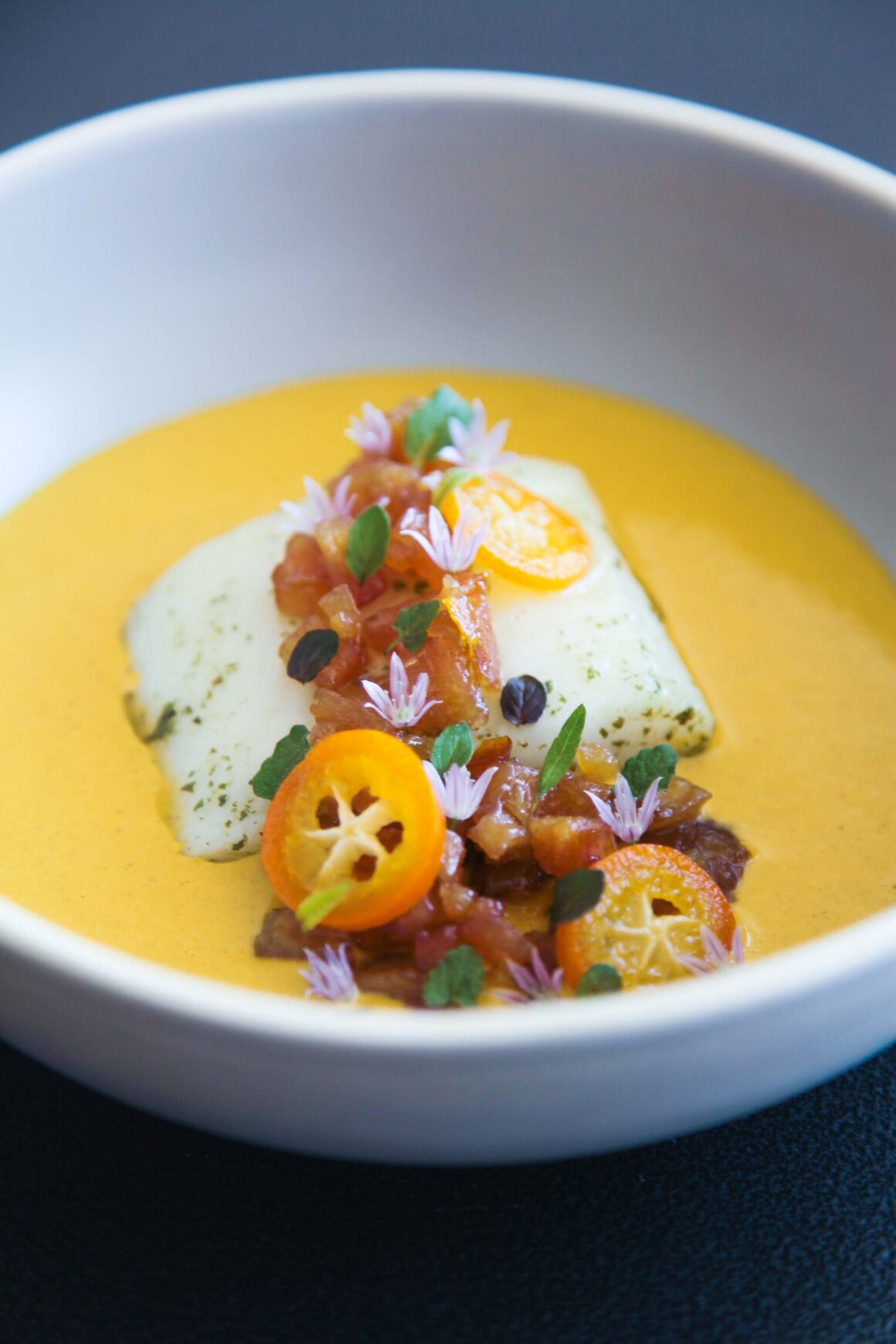

À la Française
After two weeks not being able to find it anywhere else, but having already read so much about it and planned recipes to use it, I gave up and went to the market stall again. This time a friendly Tunisian man greeted be with a bunch of delicious free grapes and helped me pick the two nicest looking lemon verbena plants. He spoke in broken English and me in broken German until we both realise we speak French. We said ‘à bientôt’, and there I was, fifteen minutes later, back home, cooking my lemon verbena recipes.
The halibut, lemon verbena, golden curry, quince and kumquat recipe
I recommend serving this dish with warm jasmine rice. Beware: the golden curry is so simple and yet so delicious you might end up using it in a lot more dishes!
This halibut, lemon verbena, golden curry, quince and kumquat dish perfectly matches the lovely sunny days and brings you refined and refreshing new flavours.
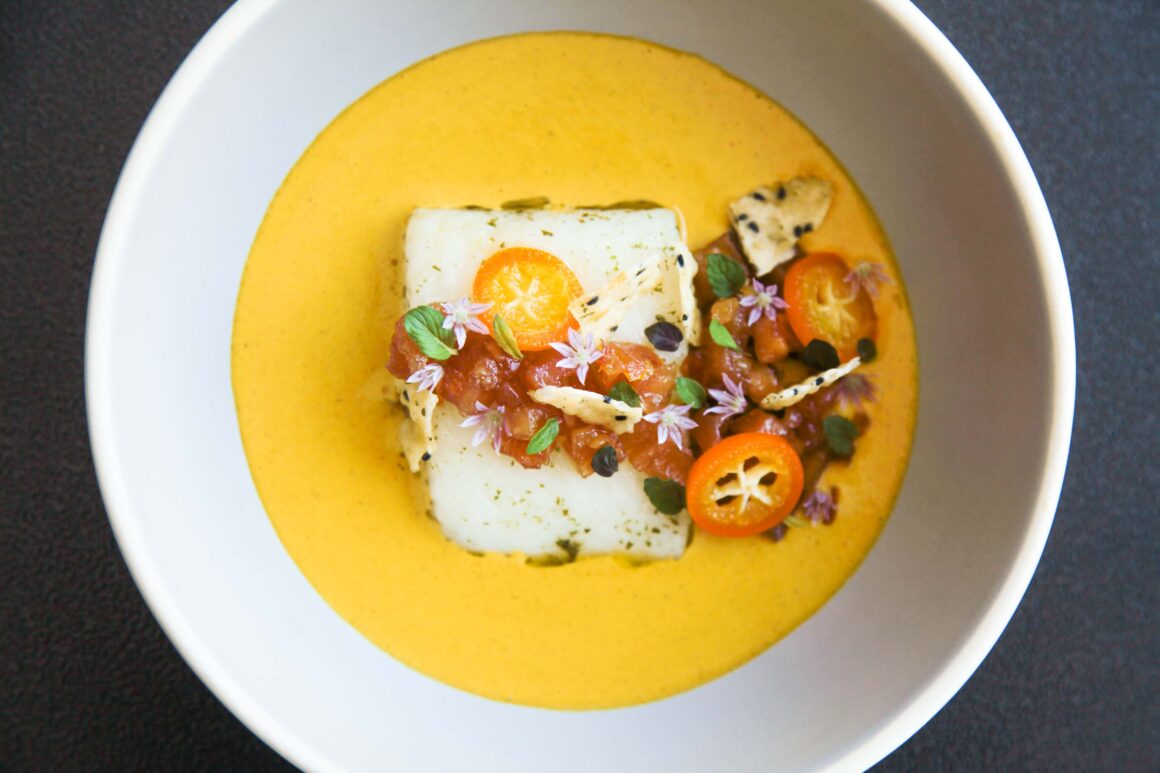

The recipe
For the lemon verbena infused halibut
2x150g halibut, skin off
1 small handful lemon verbena leaves
4 tbsp olive oil
2 tbsp salt
For the golden curry
4 garlic cloves
4 shallots
30g butter
3 kaffir lime leaves, preferably fresh
30g ginger, grated
1 lemongrass stalk, sliced thinly
1 whole clove
1 tbsp coriander seeds
¼ whole star anise
½ tsp fenugreek seeds
1/6 cinnamon stick
½ tsp chilli powder
1 tbsp turmeric powder
500ml coconut milk (1 can)
250ml good quality vegetable stock
For the spiced quince
1 large quince, peeled and diced finely
1 small piece of cassia bark
2 whole star anise
1 mild yellow chilli
20g ginger, grated
2 tbsp mirin
1 tbsp rice vinegar
2 tbsp brown sugar
20g butter
For the pickled kumquats
3 kumquats, seeds discarded, sliced thinly
1 tbsp white wine vinegar
1 tbsp water
1 tsp sugar
¼ tsp salt
3 cardamom pods
Start by preparing the pickled kumquats. Heat all ingredients apart from the kumquats in a small sauce pan until the sugar has melted. Remove from the heat, let it cool, then add the pickling liquid to the kumquats into a small bowl. Set aside until ready to use.
For the quince chutney sauté the ginger, chilli and aromatics with the butter, then add the remaining ingredients and ½ cup of water and cook on low heat for 30 minutes.
To prepare the curry, start by dry roasting the spices in a pan until they start releasing their flavour. Grind finely with a mortar and pestle and set aside.
Sauté the garlic, shallots and aromatics (kaffir lime leaves, ginger and lemongrass) with the butter, on low heat for about 10 minutes. Add the roasted spice mix – for a fine curry, I recommend passing them through a flour sifter and discarding the larger pieces. Add the coconut milk and the stock, turn the heat up to medium-high, then cook for an additional 10-15 minutes. Remove the lime leaves, then blend the curry into a silky sauce.
To cook the halibut, first brine it: add the salt to a medium pot of cold water, stir to dissolve it, then add the halibut and leave it in for 15-30 minutes. This will flavour it and make it more tender.
Remove it from the brining liquid and pat it dry.
Crush the verbena leaves with the oil in a mortar and pestle. Rub the fish, then add it to a zip lock bag or wet vacuum packer, the cook it sous vide at 50ºC. If you wish to cook it in a pan, follow all the steps, but instead of vacuum packing it, cook it in a hot non-stick pan for 2-3 minutes on each side.
Plate up, decorate with some edible flowers and microgreens, then enjoy (after taking plenty of photos of it).


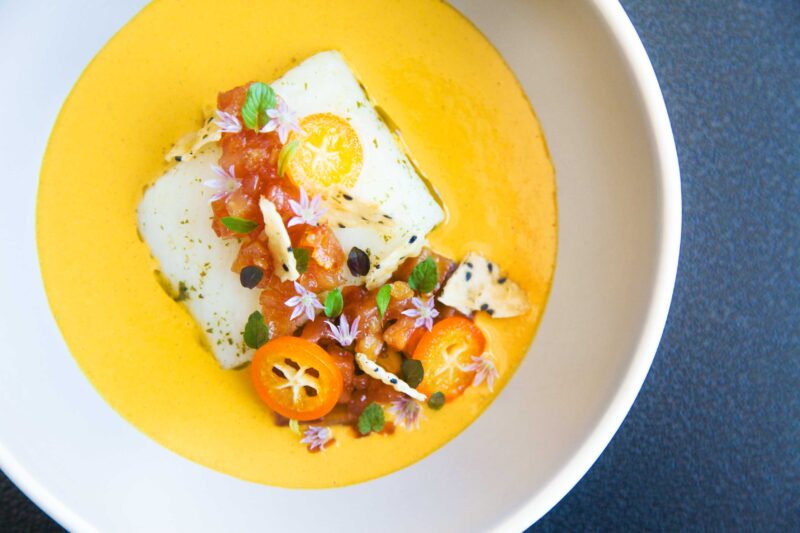
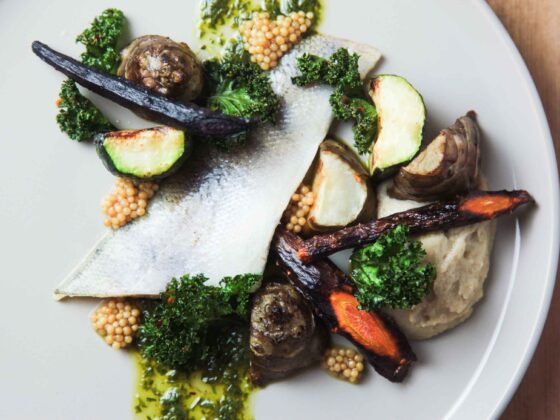
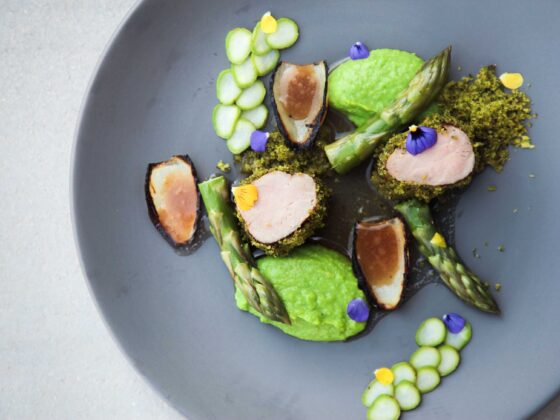
0 comments
amazing recipe
Thank you! ❤️